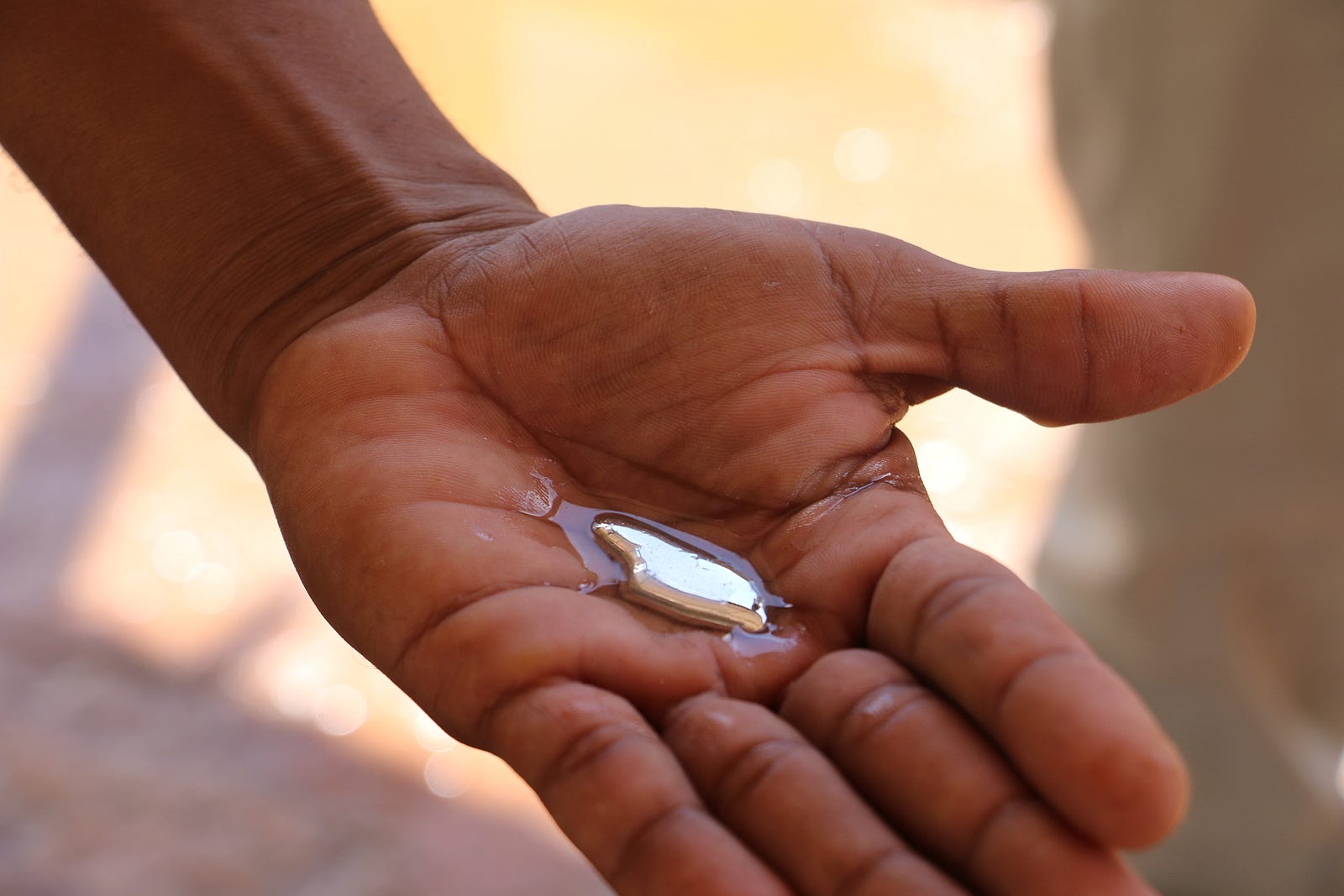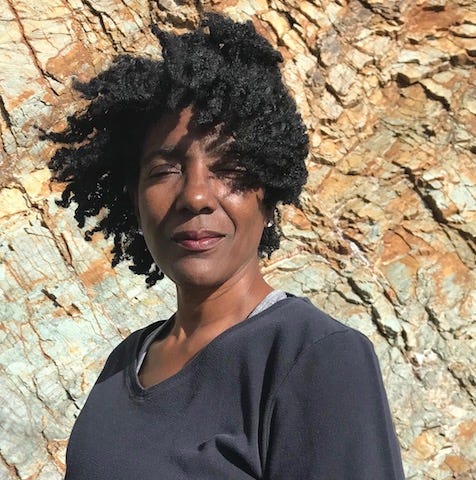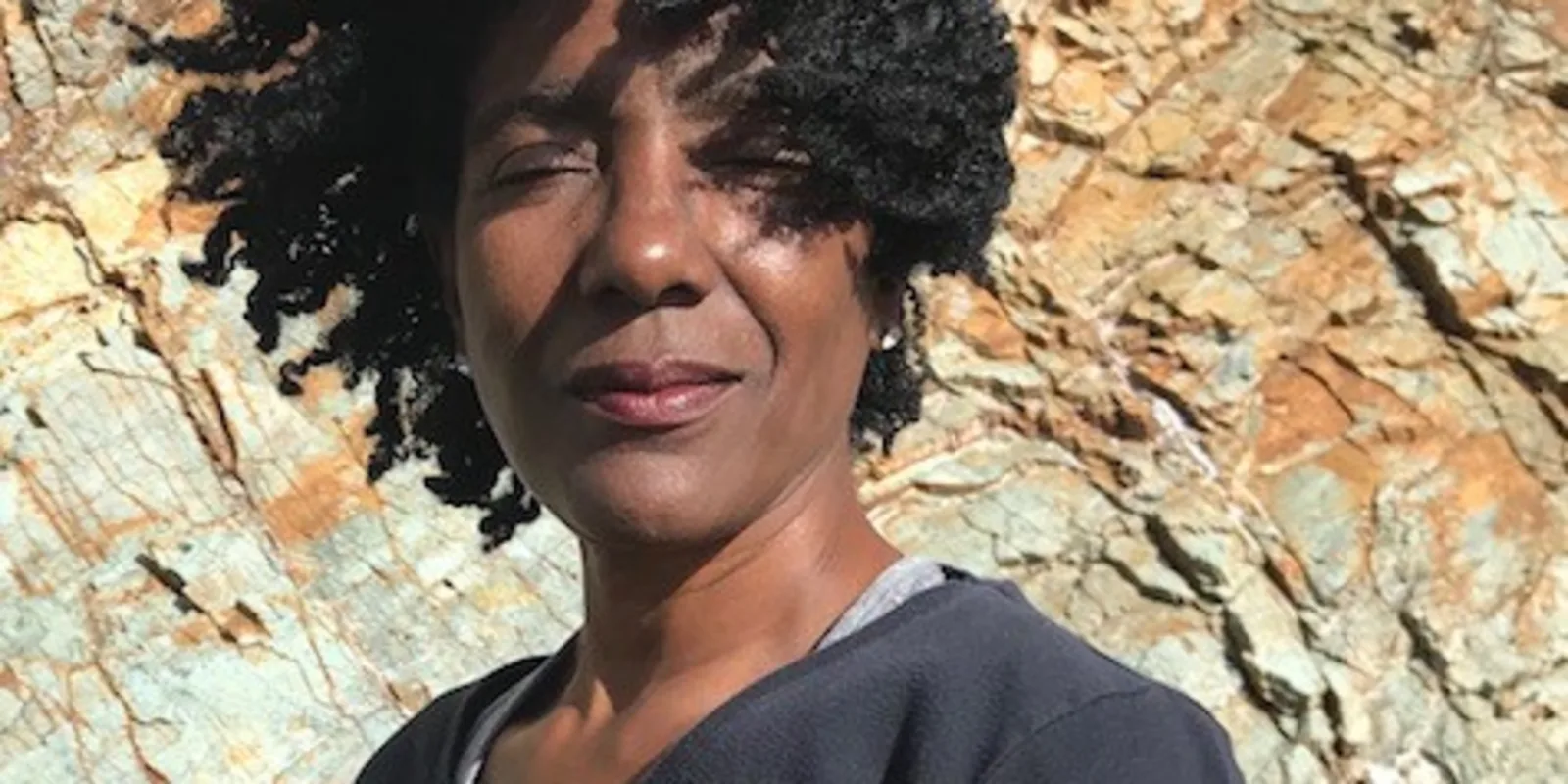An Excerpt & Conversation with Dr. September Williams
This is part of the Medical Humanities Series on Op-Med, which showcases creative work by our members. Do you have a poem, short story, creative nonfiction or visual art piece related to medicine that you’d like to share with the community? Send it to us here.

Sicily lingers, watching him dress. The cradle in the corner is more realistic than before.
“Whose is that?” she asks.
“It belonged to Sophie,” Forest hesitates, a beat longer than he should have.
“Your niece?”
“Yeah…”
“Did she live here?”
“Until she was two.”
“Two years ago?”
“Yes,” he says.
“What happened?”
“Rainy didn’t want to stay here anymore.”
“Because you sold the land?”
“That too… Rainy and Laura are friends since they were kids learning to play jacks. But, this is a story for another time. I have to work while it’s warmest outside. Will you come with me?”
“Anywhere,” she reminds them both.
The empty fragile glass tubes, with red rubber corks, are in one of Sicily’s coat pockets. She wishes they weren’t, needing those pockets to protect her hands from the whistling wind blowing across the ice.
“Minus what?” Her frozen mouth has trouble sounding the ‘M’.
“Minus thirty… the wind chill makes it lower,” Forest yells over an ice gust. He carries large syringes, half-foot long needles, and thin plastic tubes wrapped like hoses. Using a gloved hand, not as warm as a mitten, he clears the top layer of snow from the water’s frozen cover. A drill bores a fine-gauge hole into the ice. The needle, syringe, and plastic tube are assembled into a device much like a phlebotomist uses in a hospital.
“What are you doing?” Sicily asks.
“It’s called the Seldinger Technique, for cannulation of any round corridor. It’s named for a Swedish radiologist who developed it. It’s old as sex itself. I’ve only re-purposed it, instead of depositing, I’m extracting.”
“You’re drawing blood from the planet,” Sicily says.
They huddle, protecting the apparatus. Sometimes ice clogs a tube. Then, there is no sample. Forest starts again with another clean setup. After each success, he says something barely audible.
“What are you saying?” Sicily asks.
“It’s a prayer…”
“Why?”
“Gratitude…”
“For the sample?”
“That too…” He smiles under the scarf covering his mouth.
Sicily decants the water into pre-numbered tubes by puncturing the rubber corks with the needle, then pushing the syringe plunger. The precious cylinders are placed in her other pocket. Alone, Forest has performed this ritual in different locations, returning to compare
mercury concentrations one season, and one place, to another.
“Like where?” Sicily asks.
“Berlin…”
“You returned to the River Spree?”
“I had to.”
“I would have helped you,” she says.
“To do this work, I need to be invisible. You, my darling, don’t do invisible. Even the leaves of trees turn to watch when you pass.”
Sicily does not think of herself in the context of external beauty. Often seeing men and women who others would call homely as attractive, and certainly never ‘ugly,’ her perspective is the privilege of one truly gorgeous. She hopes Forest’s compliment is not a ploy to dismiss her curiosity. They gather the equipment, get in the Land Cruiser and drive toward another location. Forest knows where the land stops and the water begins because he has tagged areas with long poles. The truck is warmer than the air outside. Forest leaves the engine running while he is collecting. That insures the car’s battery is not drained by the cold. When her mouth thaws Sicily says,
“Ellie said she didn’t know where to find you.”
“She knew when I would be at Kumamoto. Other than that, your mother had no idea.”
“Kumamoto?” Sicily is aware she is inescapably lured to the low hanging fruit of the conversation.
“Japan, the university…”
“I know where it is. When?”
“A couple of months after the festival,” he says.
“For how long?”
“Two months…”
“That long? What did you do?” Sicily is determined to account for every minute they had been separated.
“I saw Henry. He’s well. Of course I didn’t think it was my place to tell him about us. Also, I confirmed that everything I suspected is mercury poisoning, here, meets the criteria. I met families and children who were affected.”
“What did you actually see?” The steam of her breath freezes against the car window.
“Typical symptoms of Minamata disease — sensory disturbances, numbness spreading over the hands like gloves and the legs like stockings. It causes difficulty grasping, poor balance and gait. Sometimes the signs are subtle and mistaken for other illness.”
“That’s not too horrible, is it?”
“In more severe cases people have strange vocalizations and narrowing of the visual field, affecting blindness or disattention to things on the periphery of sight. There is also violent shaking, escalating to seizures.” Forest reaches to better cover Sicily’s nose with her scarf.
“Thanks,” she says.
“Shall I go on?” Forest asks.
She nods, ‘yes.’ The Land Cruiser jumps and lurches through a snow bank. Forest handles it like a fish does water. Sicily holds onto the roll bar and the dash.
“The polluters don’t want the symptoms of mercury poisoning correlated with the water concentrations of either methyl or elemental mercury.”
“Forest, I get that the work is important. But how could you never think to contact me?”
“I did think, and decided not to.”
“Why?”
“The effect of the mercury is dose dependent. The higher the blood levels, the greater the symptoms.” He does not acknowledge her personal question.
“And this is related to you not contacting me how?” Sicily asks.
“We’ve been over this. It’s not safe,” he says.
“Yet, here I am.”
Excerpt from Chasing Mercury by September Williams (Chapter 20, Hudson Bay, February 1974).

A Conversation With Dr. September Williams
On the inspiration for “Chasing Mercury”
In 2013, I randomly saw a United Nations Environmental Program (UNEP) bulletin. It said that a World Convention on Mercury had been drafted and signed, by more the 140 nations, nearly sixty years after methyl mercury was first observed as a neurotoxin causing Minamata Disease, severe human mercury poisoning. I thought, “The arc of justice is slow but sure,” as Martin Luther King Jr. had said. I had been aware of Minamata disease since the mid-1970s, when I was a college student at the University of Manitoba in Winnipeg, Canada and listened to a talk by a Japanese clinical researcher and expert in Minamata disease. His name was Dr. Masazumi Harada. Forty years later, there was finally action.
Dr. Harada had died the year before, in 2012. Decades earlier, in 1975, Dr. Harada’s team at Kumamoto University had been studying human mercury poisoning caused by industrial waste for twenty years in Minamata, resulting from the Chisso Chemical factory dumping elemental mercury-laden waste into the Minamata River and ultimately into the sea — resulting in methyl mercury concentration in fish and in the cats who ate the scraps, causing seizures and neurological collapse. The same symptoms were eventually seen in humans, mostly fishermen who took part of their pay as fish.
I was a zoology student at the University of Manitoba when private citizens in Canada reached out to the Japanese researchers, suspecting that they were seeing mercury poisoning in North Western Ontario, extending into Manitoba through waterways leading to Lake Winnipeg, one of the largest fisheries in North America. After 40 years of biannual visits, Harada’s team concluded their research, unequivocally documenting what they had known all along — Minamata disease existed in both young and aging Canadian members of the Grassy Narrows First Nation. The polluting paper factory dumped its toxin and left the region a generation before.
As a member of the National Writers Union (AFL-CIO/UAW) and an affiliate of the International Federation of Journalists, prior to writing Chasing Mercury, I had been tracking the high rate of murders of journalists who are environmental protectors around the world. I wanted honor those journalist, many of whom were aboriginal peoples. I’m particularly indebted to the work of “the father of the photo essay” W. Eugene Smith, whose last story was ‘Minamata,’ and his former wife Aileen Miko Smith, the current director of Green Action Japan. All of these inspired me to write Chasing Mercury as an homage to those who worked so hard to bring the science and a remedy into the light.
On choosing romance as a genre
I chose romance as a primary genre because it is often written and read by women. Women often raise children whether with or without another parent. The more information women process, the better and the more likely key points will be passed from one generation to another, affecting change at a cultural level — where environmental protection ultimately has to live.
Since genre is a “real thing” influencing readership it was important for me to think about why I chose to write a romance, despite the suspense elements. Romance by definition has two main elements 1) a central love story and, 2) an emotionally satisfying and optimistic ending. So a book about love in the time of mercury poisoning is bound to have to leap some big hurdles.
On the inspiration for this excerpt
I used this and a few other chapters as a vehicle to deliver a lot of didactic science to the reader. However I had to do that while acknowledging a pivotal moment in the two protagonists’ relationship. The medical data had to be wrapped in the intention to force the relationship to another level — the level where the lovers would stop pretending that they were not chasing mercury together. I chose this selection to share because I think the medicine, and the field research, is a device that recognizes and illustrates that they must function as partners to get work done and defeat evil in the form of mercenaries destroying the environment.
Since the romance genre has to have a turning point that underscores major conflicts threatening lovers’ relationships, Forest’s profession as a Powwow dancer and whistleblowing journalist serves as a risky business for the lovers. Aboriginal peoples and journalists are among the most frequently murdered environmental protectors. Forest is both. The environment is the life source of extraction industries, like gold mining and crude oil, that influence significant parts of the world’s economy.
How writing relates to medicine
When you create a whole world as I have in the Chasing Mercury Trilogy — the opportunity to explore bioethical issues is myriad as is reflection on the real world ethical issues. I write as I practiced medicine — staying in touch with my intuition in the context of what is before me.
I have more than twenty-five years of clinical case-based bioethics consulting under my belt in Emergency, Geriatrics, Palliative Care and refugee medicine settings. The closest count to the number clinical bioethics consults I’ve done besides the care of my own patients — over 30 years — is estimated by the number of death certificates I’ve signed — it rounds to one thousand. This is including during the HIV/AIDS epidemic in Chicago, refugee medicine settings, emergency medicine, and palliative care. Currently my only medical work is as a bioethics consultant and writer for Ninth Month Consults.
On participating in Reimagine [End of Life]
I can’t say that Reimagine End of Life changed my practice — but it did reinforce the consistent approach that I took to my clinical practice in the face of escalating scapegoating technology for a medical culture that has shifted away from the humanitarian basis of clinical care over the past 15 years. My approach is that every human encounter should leave all participants feeling just a little bit more human. I didn’t make it up — I’ve had some great teachers, both patients and mentors. The pendulum will shift again, but there has been no time in my medical history where bioethical analysis and guidance has been more needed in practice.
I felt my life affirmed by the presence of co-presenters and audience when I read from Chasing Mercury at the Reimagine End of Life in San Francisco. I’ve never shared a stage with so many amazing presenters as I had there — and I’ve had the honor of being on some pretty extraordinary platforms. What set the group at Reimagine End of life apart from was an unabashed commitment to the “creative reach.” All presenters in our session operated on the interfaces between science and art. They reminded me a lot of the people and families in Chasing Mercury — my people!

September Williams, MD is an American physician-author, bioethicist and filmmaker. Dr. Williams speaks about Chasing Mercury in medical grand rounds and undergraduate medical and college events.







